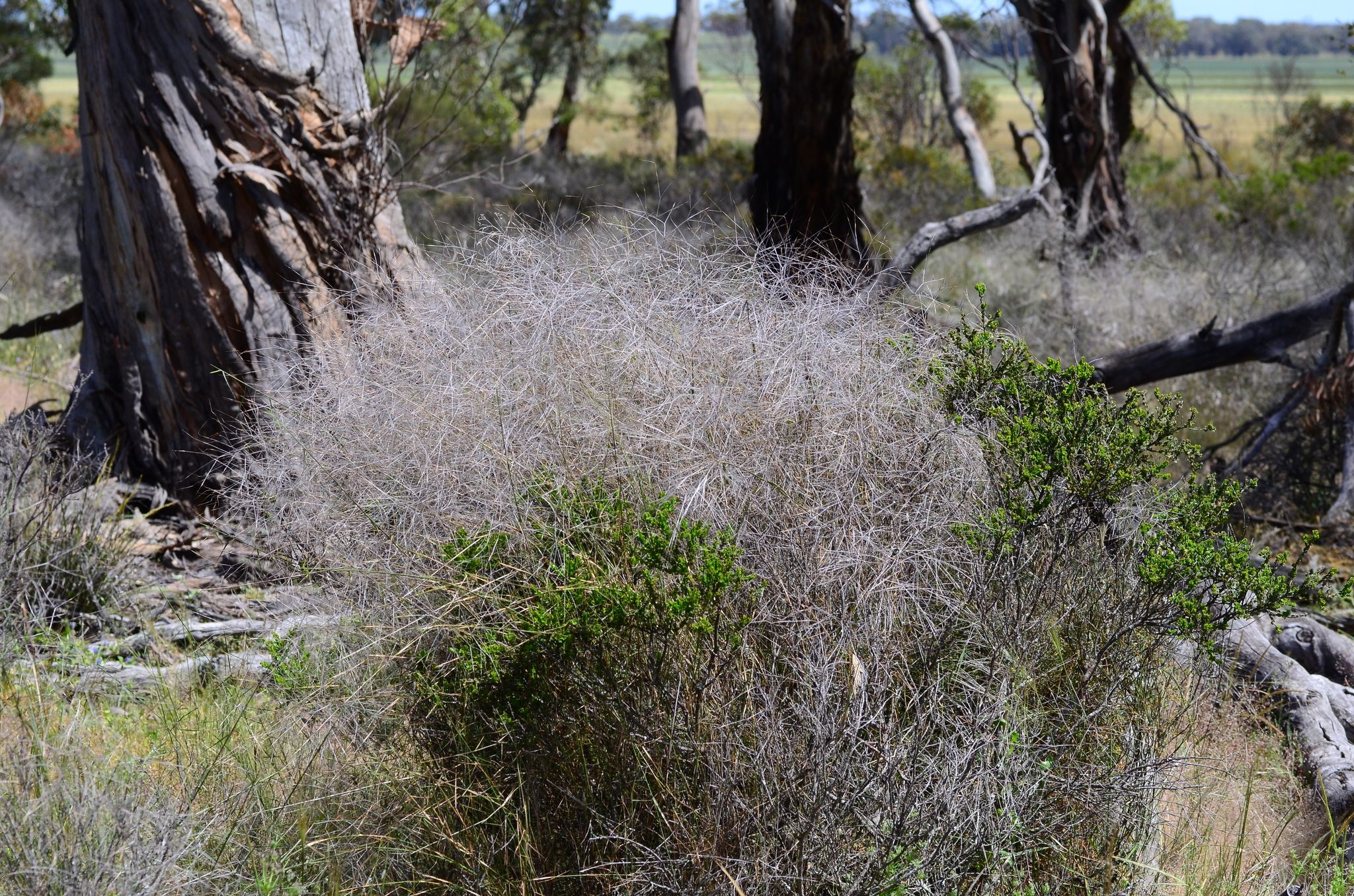
From the Latin australis – southern, Greek stype – referring to the fibre obtained from Esparto Grass, S. tenacissima L.
Variable often rhizomatous tufted perennial. Leaves mostly basal, rolled in bud, otherwise pleated or rolled and with prominent ribs and grooves on the upper surface. Inflorescence a spatheless panicle. Spikelets similar, flattened laterally. Florets 1, disarticulating above the glumes. Hairy callus present. Glumes 2 more or less equal, usually longer than lemma and with 1-3 veins, ridged, awnless. Lemma rolled up, usually hairy, with an awn that usually has a thick, twisted lower half and generally 2 bends, 3-5(-7) nerved. Palea thinner than the lemma, 2-nerved, keel-less, awnless.
A range of species is used for revegetation.Australian species formerly in Stipa have been transferred to Austrostipa. Stipa, as currently understood, does not occur in Australia.
Mostly from seed, occasionally by division.
Some species are used for forage and fodder, others have stems containing fibres that are useful in making paper, rope etc. Occasionally used in golf course roughs, wetlands, restoration and revegetation sites but of little value as turf.The seeds can irritate soft parts of stock and contaminate wool.
Mature florets darkish; lemma margins overlapping. Upper part of the lemma without pappus-like hairs. Stipa has papery spikelets with a long plumose terminal awn.
About 70 tropical and temperate species often from dry regions.
Vickery (1986), Jacobs & Everett (1996).
Source: (2005). Poaceae. In: . Horticultural Flora of South-eastern Australia. Volume 5. Flowering plants. Monocotyledons. The identification of garden and cultivated plants. University of New South Wales Press.
